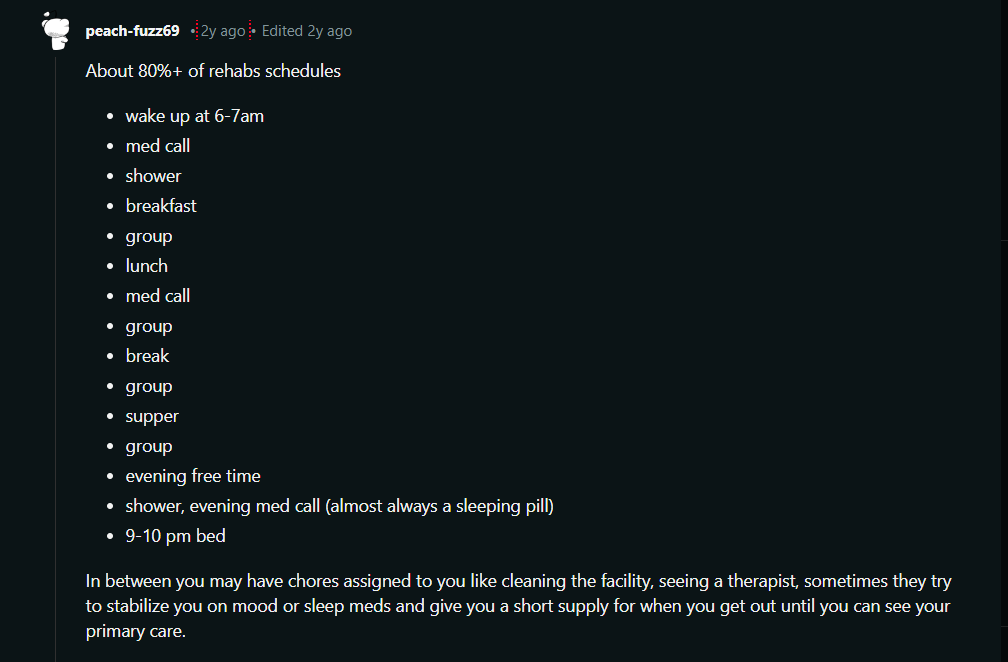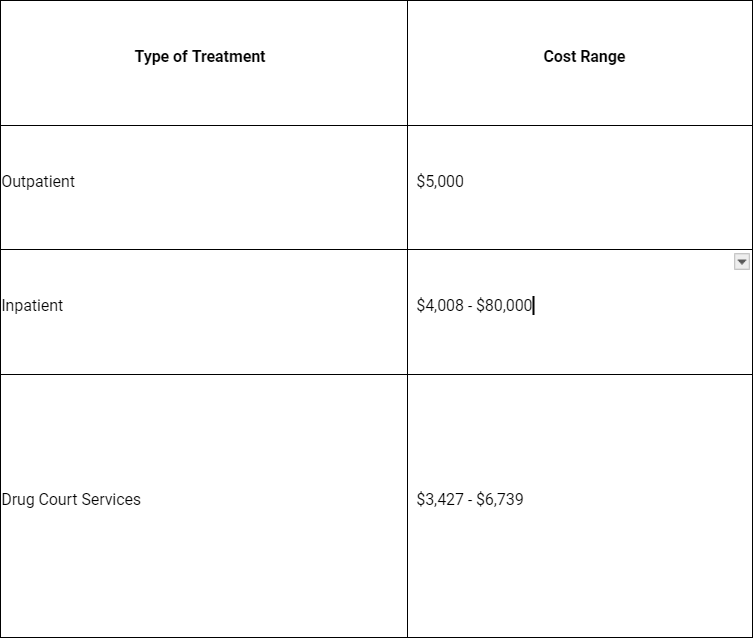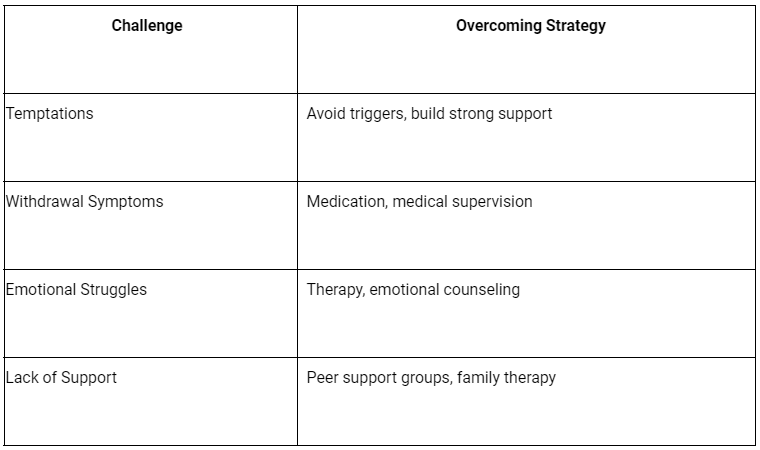Drug rehab is a structured environment where individuals receive help to overcome addiction. Orange County Drug & Alcohol Rehab Center offers one of the best drug rehab in Orange County, CA. This is where they start building a healthier life. Programs vary but often include detoxification, therapy, and aftercare. The main goal of rehab is to stop substance use. Another is to understand and address the underlying issues that contribute to addiction.

Inpatient and outpatient rehab programs cater to different needs. Inpatient rehab provides a controlled environment and 24/7 care. This is ideal for those with severe addiction. Outpatient rehab offers more flexibility. This allows individuals to receive treatment while still maintaining their daily routines. Therapy sessions, both individual and group, play a crucial role. They tackle the emotional and psychological challenges associated with addiction.
The relapse rates for individuals in substance abuse treatment programs are between 40% and 60%. However, there are a lot of effective methods out there. Cognitive-Behavioral Therapy (CBT) has shown success rates ranging from 40% to 60%. This for treating substance use disorders. Motivational Interviewing (MI) is also effective in reducing substance use. It has a success rate of 76% among adolescents

This redditor shares her experience in rehab. She’s very grateful for the experience. It also helped her become 4 years sober. She even described her rehab experience as something she “enjoyed”.
Effective rehab also includes planning for aftercare to support long-term recovery. This may involve ongoing counseling, support groups, and strategies for relapse prevention. Each person’s journey through rehab will be unique.
What is Drug Rehabilitation?
Drug rehabilitation aims to help individuals overcome addiction. It also aims to help people regain stability in their lives. It involves a structured process with various types of programs. They cater to different needs and levels of addiction.
The process can vary but generally involves detoxification, therapy, and aftercare. During detox, the body clears itself of drugs, which can be quite challenging. Therapy includes individual and group sessions. Both are needed to explore the reasons behind addiction and develop coping strategies. Aftercare involves support systems to prevent relapse. This comprehensive approach aims to bring long-term changes.
What is a Typical Day in Drug Rehab Like?
Drug rehab programs provide a structured and supportive environment. This is designed to help individuals recover. Days are filled with a mix of therapy, activities, and some free time, all aimed at fostering healing.
Daily Life in Rehab
Mornings usually start early in rehab. Typically, patients wake up around 7:00 or 8:00 in the morning. The day begins with breakfast, often followed by medications if needed. Morning meals are an important time to prepare for the day's activities.
After breakfast, treatment groups usually start around 9:00 in the morning. These can include individual therapy where patients work one-on-one with a therapist. This is to explore personal issues and set goals. There are also group therapy sessions. This is where individuals share experiences and get support from peers.
Workshops, classes, or lectures might fill the mid-day slots. Topics can range from stress management to life skills. It helps patients build tools for long-term recovery.
Afternoons may include one-on-one therapy and group sessions. It could also be activities like exercise or mindfulness practices. By early evening, around 7:00 or 8:00 p.m., patients often have some free time to relax or engage in leisure activities.

This Redditor shared what his daily schedule was. He mentioned that in between the schedule, there are chores assigned. They also give mood or sleep meds sometimes.
Olivia Shares what a Day in a Drug Rehab Looks Like

Olivia’s Background and Story
Olivia is a recovering addict from Asana Recovery. She explains that rehab centers like Asana Recovery aim to create a structured and supportive environment. This is to minimize stress and uncertainty. They aid in the healing and recovery process. Olivia, who has been clean and sober for over a year, shared her personal experiences. She emphasized the importance of developing new, healthy habits during and after treatment.
What is a Day in Drug Rehab Like According to Olivia
Morning Routine
- Early Rise: Residents are expected to wake up early, as part of instilling healthy habits that are meant to continue post-discharge.
- Morning Activities: The day typically begins with a yoga or meditation session. This helps residents start the day relaxed and focused.
- Breakfast: A nutritious breakfast follows, preparing residents for the day's activities.
Mid-Morning Sessions
- Group Sessions: After breakfast, there is usually a group session led by a counselor or therapist. These sessions focus on addiction and recovery topics such as triggers and the 12-step process.
- Clarity and Understanding: A huge focus is on achieving clarity. They discover about the factors in one's life that have contributed to substance abuse.
Afternoon Therapy
- Therapeutic Sessions: The afternoon is dedicated to intensive therapeutic sessions, which can include:
- Cognitive Behavioral Therapy (CBT): Focuses on identifying and changing behavioral responses. Espicially to specific triggers.
- One-on-One Therapy: Provides a safe environment to open up about fears and concerns.
- Group Therapy: Offers camaraderie and shared experiences, fostering emotional healing and fellowship.
- Specialized Sessions: Residents may have sessions focused on anger management. They could also be focused on stress management, or grief counseling.
Additional Activities
- Physical and Creative Activities: Some days include gym time. Some days it could be alternative therapies such as music therapy, art therapy, or equine therapy.
- Inspirational Speakers: Occasionally, speakers share their stories and provide hope. They also provide practical advice for rebuilding life post-treatment.
Evening Routine
- Dinner and Relaxation: After a nutritious dinner, the evening is typically less structured. Activities might include attending an outside 12-step meeting or relaxing with a movie.
- Weekend Activities: Weekends offer fun activities like hiking and surfing. There's also beach volleyball, go-karting, and bike riding. These contribute to a well-rounded recovery experience.
Olivia encourages viewers to approach rehab with an open mind and to focus on recovery for their own sake. She highlights the impact that the structured and supportive environment of Asana Recovery had on her journey. Contact Orange County Drug & Alcohol Rehab Center if you need a structured and supportive rehab in Orange County, CA.
What are the Types of Rehab Programs?
Rehab programs can be categorized mainly into inpatient and outpatient programs.
Inpatient rehab involves staying at a treatment facility where patients receive 24-hour care. These programs are highly structured. They also provide a safe environment free from external triggers.
Outpatient rehab allows individuals to live at home while attending treatment sessions. This type is suitable for those with milder addictions. They are also for those who have completed inpatient programs and need more support.
Residential treatment is similar to inpatient rehab but often lasts longer. It also focuses on those with severe addiction issues. Licensed and accredited facilities offer the best care. They meet standards set by organizations like the National Institute on Drug Abuse.
How Does Drug Rehab Work?
Drug rehab is a structured program that helps people overcome addiction. The process usually involves several steps. Each designed to address different aspects of the addiction and promote recovery.
Detoxification: The first stage is detoxification, or detox. It involves clearing drugs or alcohol from the body in a safe environment. This process can take a few days to a week. Medical professionals may provide medication to help ease withdrawal symptoms.
Therapy and Counseling: After detox, the next step is therapy. Different types of therapy are used. Such as individual counseling, group therapy, and family therapy. Therapies aim to help patients understand their addiction. They also help to develop coping strategies and learn healthier behaviors.
Life Skills Training: Rehab programs also teach life skills. These may include job training, financial management, and ways to build healthy relationships. Learning these skills can help individuals navigate life without relying on substances.
Medication-Assisted Treatment (MAT): Some people might need medications as part of their treatment. Medications can help manage withdrawal symptoms. It also helps reduce cravings and treat any co-occurring mental health disorders. For example, depression or anxiety.
Aftercare Planning: Before leaving rehab, patients work on an aftercare plan. This plan may include continued therapy and support groups. It may also include other resources to help maintain sobriety.
Support Networks: Building a support network is crucial. Support can come from family and friends. Support groups like AA (Alcoholics Anonymous) or NA (Narcotics Anonymous) also helps.
Routine and Structure: Daily routines are important in rehab. Structured days help keep individuals focused on recovery. It also cuts the chance of relapse.
Rehabilitation gives people the tools and support for a sober and productive life. Each person's journey through rehab can vary. But, these steps are commonly involved in most programs.
How Much Does Drug Rehab Cost?
The cost of drug rehab can vary widely based on several factors.
Outpatient treatment programs typically cost around $5,000. These programs allow patients to live at home while receiving treatment a few days a week.
Inpatient or residential treatment programs are more expensive. These programs require patients to live at the facility 24/7. They can range from $4,008 to $80,000, depending on length of stay, location, and services offered.
Factors influencing costs include:
- Location: Rehab centers in certain states or cities may be more expensive.
- Type of Program: Inpatient programs generally cost more than outpatient programs.
- Amenities and Services: Facilities offering luxury accommodations can charge higher fees.
- Length of Stay: Longer stays usually mean higher costs.
Here's a table to highlight average costs:

It's important to note that these costs can vary significantly. Some rehab centers offer sliding scale fees based on income. Many accept insurance, which can help reduce out-of-pocket expenses. Other payment options include financial aid, grants, or payment plans.
What are Common Challenges in Rehab and How to Overcome Them?
Temptations :During rehab, individuals often face strong temptations to relapse. These can be triggered by stress, environmental cues, or emotional states.
Withdrawal Symptoms: The early days of rehab often involve withdrawal symptoms. These can be both physically and emotionally taxing.
Emotional Struggles: Recovering individuals may experience intense emotional swings. Feelings of guilt, shame, or anger are common.
Lack of Support: Sometimes, individuals feel isolated during rehab if family or friends are not supportive.
Overcoming Challenges in Rehab
Accountability: Being accountable helps in staying on track. This can involve regular check-ins with a counselor or mentor.
Medication: For managing withdrawal symptoms, medication can be prescribed. This helps ease the physical discomfort and reduces cravings.
Therapy: Regular therapy sessions provide emotional support. Counseling helps address underlying issues and teaches coping strategies.
Peer Support: Support groups are crucial. Sharing experiences with others going through similar challenges can be motivating and reassuring.
Tools and Strategies
- Routine: Establishing a daily routine helps create structure and stability.
- Mindfulness and Meditation: These practices can reduce stress and improve emotional well-being.
- Healthy Lifestyle: Eating well, exercising, and getting enough sleep support overall recovery.
Rehab Challenges and Strategy Summary Table

What is the 12-Step Program?
The 12-Step Program are guiding principles for those struggling with addiction. This is originally developed by Alcoholics Anonymous (AA). These steps outline a course of action for recovery from addiction. It is also for compulsion or other behavioral problems. Here’s a summary of the 12 steps:
- Admit Powerlessness: Acknowledge that one is powerless over their addiction. Admit that their life has become unmanageable.
- Hope: Believe that a power greater than oneself can restore sanity.
- Surrender: Decide to turn one’s will and life over to the care of this higher power, however one defines it.
- Self-Examination: Conduct a searching and fearless moral inventory of oneself.
- Confession: Admit to oneself, to a higher power, and to another human being the exact nature of one’s wrongs.
- Readiness: Be ready to have these defects of character removed by the higher power.
- Humility: Humbly ask the higher power to remove these shortcomings.
- List Amends: Make a list of all persons one has harmed and become willing to make amends to them all.
- Make Amends: Make direct amends to such people wherever possible. Only unless to do so would injure them or others.
- Continue Inventory: Continue to take personal inventory. Promptly admit when one is wrong.
- Seek Connection: Seek through prayer and meditation to improve conscious contact with the higher power. Pray for knowledge of its will and the power to carry that out.
- Helping Others: Having had a spiritual awakening because of these steps, try to carry this message to others. Especially those struggling with addiction and to practice these principles in all affairs.
What is the Phase Four of the Intensive Outpatient Counseling Program at Orange County Drug & Alcohol Rehab Center?
Phase Four of our drug treatment program entails an intensive outpatient counseling program. As you begin to feel more like yourself again without substances, you’ll need to go through an outpatient program. Especially one that will help you get to the root of your addiction.
To learn more about our outpatient counseling program and how you or a loved one can become admitted into our drug treatment program, reach out to us.
What To Expect With Phase Four Of Our Drug Treatment Program
In Phase Four, you will begin to learn how you can live a life without drugs and alcohol. While the previous phases detailed detoxing your body and your mind from substances, in Phase Four, we’ll help you with those mental hurdles. Add those unresolved emotions that you might be struggling to overcome.
We’ll help you break free of those constraints as well as help you achieve a better awareness of your own happiness with your life. When you enter Phase Four, you’ll work with a chemical dependency counselor who can help you learn how to live in the present.
How Does Phase Four Work?
Phase Four is the final step of our drug treatment program. As we enter Phase Four, you’ll start a unique form of therapy. One that will help you handle any type of mental state you might find yourself in whether it’s an easy or a hard day.
Our philosophy at Orange County Drug & Alcohol Rehab Center is based on drug and alcohol counseling needs to dive into an individual’s past. This is to fully understand what has drawn them to drugs in the first place. The negative emotions that someone might exhibit is what drives a person to want to become happier with substances. We’ll help you look toward a future that is healthier and happy with the help of a trained professional.
Why You Should Select Orange County Drug & Alcohol Rehab Center
Located in California, Orange County Drug & Alcohol Rehab Center is a premier facility dedicated to guiding you towards long-term recovery. As a family-owned center, we pride ourselves on offering a unique rehabilitation experience. We address both physical and mental addiction. Our four-phase drug treatment program is designed to help you achieve a healthier and happier life free from substances.
Why Choose Us:
- Family Owned - We offer a personal touch and a compassionate approach to your recovery journey.
- PhD Level Clinical Director - Our program is overseen by an expert with a doctoral level of expertise.
- Masters Level Therapists Specialized in PTSD and Trauma - Our therapists are specialized in treating PTSD and trauma. This ensures comprehensive care.
- State Licensed and Joint Commission Accredited - We meet the highest standards of care and safety, giving you peace of mind.
- Legitscript Certified - Our certification assures that our practices meet the rigorous standards. Both legitimacy and quality in addiction treatment.
Choose Orange County Drug & Alcohol Rehab Center for a supportive, professional, and accredited path to a substance-free life.
Any questions? Contact us anytime
Contact Us
We will get back to you as soon as possible
Please try again later
MEDICATION ASSISTED TREATMENT
We offer MAT Medication Assistant Treatment, both Maintenance and Anti Craving. Our Technological, Medical and Clinical treatment approach mitigates and heals alcoholism, opiate dependency, benzodiazepine dependency and the underlying causes and conditions.
ABOUT OC REHAB CENTER
Orange County Drug and Alcohol Rehab Center is located at Irvine Blvd Tustin, CA. We have a facility that you will go through when you become admitted to our drug treatment facility. In this part of the country, the weather is beautiful; most of the year it is sunny, and it creates the perfect atmosphere to recover from your alcohol or drug addiction. If you or a loved one are suffering from substance abuse, then learn more about our drug treatment facility to see if we’re the right program for your recovery.
